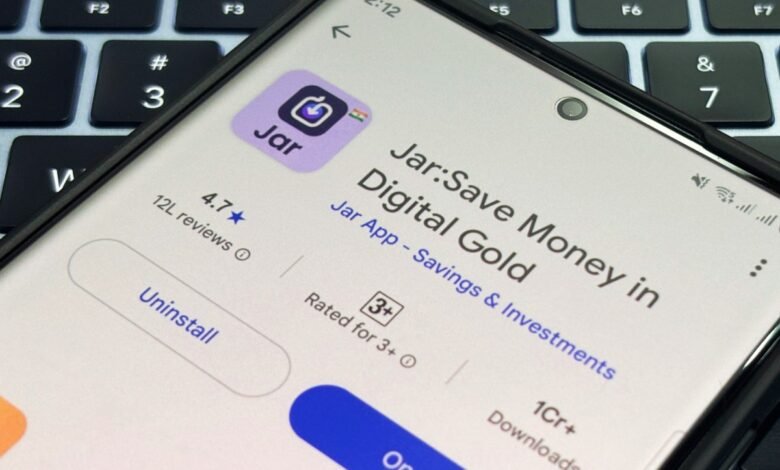
▼ Summary
– Jar is an Indian fintech startup that has turned profitable by enabling users to invest in gold digitally, targeting first-time savers with low entry barriers.
– The startup focuses on underserved low- to middle-income users, especially in smaller towns, with over 35 million registered users and 95% saving formally for the first time.
– Jar’s operating revenue grew ninefold to ₹2.08 billion in FY24, while total revenue surged forty-nine-fold to ₹24.50 billion, driven by gold transactions, jewelry sales, and partnerships.
– The company has vertically integrated its operations, partnering with entities like Brinks for custody, and expanded into digital payments via UPI to increase user engagement and revenue streams.
– Jar uses gamification, personalized experiences, and UPI AutoPay to encourage savings, and it has raised $63.3 million in funding with plans for an IPO next year.
Jar, an innovative Indian fintech platform, has achieved profitability by empowering millions of first-time savers to invest in digital gold. Unlike many competitors that target affluent urban customers or credit-based products, Jar has tapped into a deeply rooted cultural affinity for gold, making it accessible even to those with limited disposable income. With a minimum daily investment as low as ₹10, the platform opens the door to formal savings for low- and middle-income users who have historically been overlooked by conventional financial institutions.
The company now boasts over 35 million registered users spread across 12,000 zip codes, with a significant 60% hailing from India’s tier-2 and tier-3 towns. A remarkable 95% of these users are engaging in formal savings for the very first time. This rapid adoption has translated into explosive financial growth. Jar’s operating revenue surged ninefold in FY24, reaching ₹2.08 billion, while total revenue skyrocketed forty-nine times to ₹24.50 billion. This impressive figure includes earnings from digital gold transactions, jewelry sales via its Nek platform, and commissions from third-party distribution partnerships.
Nek, launched just last year, has become a substantial contributor to this diversified revenue model. Operating on a zero-inventory drop-shipment system, it offers gold, silver, and diamond jewelry across more than 8,000 regions. The platform crossed the ₹1 billion revenue mark in its first full year and continues to expand steadily.
Jar’s profitability over the last two consecutive quarters reflects a strategic shift toward vertical integration. Previously acting as an intermediary for a third-party gold provider, the company now manages the entire gold lifecycle in-house, from purchase and storage to distribution. This move allows Jar to capture more value along the chain and even supply gold to external platforms like PhonePe, owned by Walmart.
Further broadening its ecosystem, Jar recently integrated with BharatPe and Unity Small Finance Bank to enable UPI-based payments directly within its app. This step not only introduces a new revenue stream but also enhances user engagement by transforming the app from a pure savings tool into a multipurpose financial platform.
A key driver of user retention has been the adoption of UPI AutoPay, which facilitates recurring transactions. This feature supports Jar’s “daily savings” model, encouraging consistent user participation. The app caters to a wide audience, including IT professionals, manufacturing workers, small entrepreneurs, and daily wage laborers like electricians and carpenters. Support for nine regional languages ensures accessibility across diverse educational and economic backgrounds.
Jar employs data-driven personalization and gamification to keep users motivated. The platform analyzes device type, location, language preference, and saving behavior to tailor the experience and prompt continued engagement.
Backed by investors such as Tiger Global, Tribe Capital, and Arkam Ventures, Jar has raised $63.3 million to date and was last valued at over $300 million. With strong financials and growing market penetration, the company is reportedly eyeing a public listing next year.
(Source: TechCrunch)
